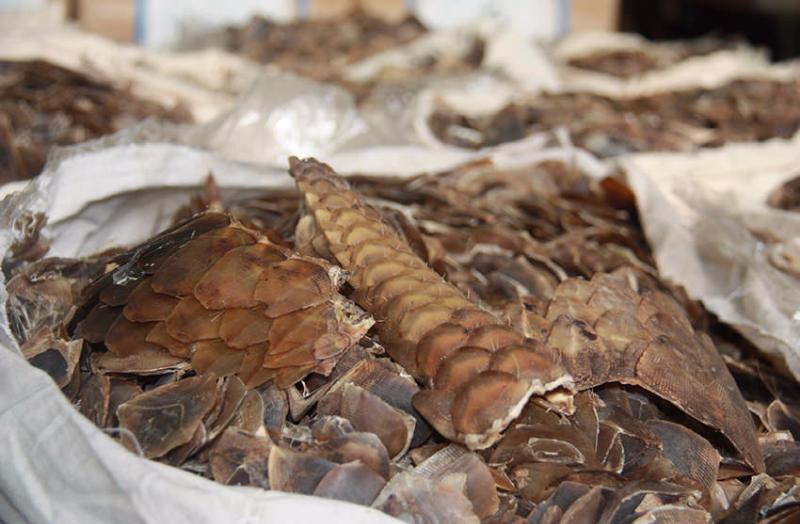The global trafficking of Pangolins: Seizures and Trafficking Routes from 2010–2015 - Wildlife Trade Report from TRAFFIC (original) (raw)
The report was released in the wake of the world’s largest ever pangolin seizure, when China announced the seizure of 11.9 tonnes of scales from a ship in Shenzen last month.
Known as the world’s most trafficked mammal, all eight (four Asian and four African) species of pangolins are prohibited from international trade under CITES.[1]
The new comprehensive analysis of cross-border pangolin seizures has shown that a combined minimum of 120 tonnes of whole pangolins, parts and scales were confiscated by law enforcement agencies from 2010 to 2015.
Perhaps most striking was the discovery that 159 unique international trade routes were used by traffickers during the six-year study period. By comparison, a previous analysis of CITES trade data found 218 such routes over a 38-year period from 1977–2014.
The latest study by TRAFFIC and the University of Adelaide, reinforces the highly mobile nature of smuggling networks, with traffickers quickly shifting from commonly used routes after a short period and creating many new routes each year.
Additionally, the study found tens of thousands more individual pangolins, parts and scales of unknown weight had also been recovered in the 1,270 international seizure incidents, mostly made by Asian law enforcement agencies.[2]
This paints a grave picture of a phenomenal quantity of pangolins being trafficked and very nimble traffickers who adapt fast, likely in response to enforcement actions. It shows traders are indiscriminate about the new routes they choose and any legitimate means of transport is fair game for them to exploit.
Kanitha Krishnasamy, Acting Regional Director for TRAFFIC in Southeast Asia
The findings in Global Trafficking of Pangolins: A Comprehensive Summary of Seizures and Trafficking Routes from 2010–2015 highlighted the truly global nature of the trade: 67 countries/territories implicated, including those not home to pangolins.
China was the most common destination in terms of large-quantity shipments of pangolin scales while whole pangolins were mostly traded within Asia, with Indonesia seizing the largest volume during the six-year period of the analysis.

Pangolin scales weighing 136 kg seized at the Guangzhou Customs post offices in 2010
Minor shipments of pangolin body parts mainly went to the U.S., however, the quantities entering the U.S. were not comparable to the massive shipments trafficked through Africa and Asia.
African countries were mostly implicated as the origin, predominantly of scales, heading to Asia. Europe was identified as a major transit hub, mostly for African pangolins being transported to Asia, but also as a destination in the case of the Netherlands and Switzerland.
The report’s authors recommend profiling through intelligence-led investigations by law enforcement agencies to forecast the changing trafficking patterns and put themselves in a more advantageous position to cripple organized criminality.
“This report highlights again the alarming global nature of trafficking in pangolins and their parts, and is particularly concerning because it shows that trafficking takes place through highly mobile networks that use shifting trade routes,” says Daniel Challender, Chair of the IUCN SSC Pangolin Specialist Group and an author of the report. “Concerted action is needed along the entire trafficking routes identified to ensure illegal trade no longer poses a threat to pangolin populations.”
The report also urges all implicated countries to review laws and increase vigilance of pangolin trafficking, in particular those countries with low numbers of seizures, but implicated in many trafficking incidents.
The authors call for improved and more rigorous reporting of pangolin seizures by all countries in line with CITES requirements, citing incomplete information as an impediment to a more holistic understanding of the roles countries play in the global trafficking of pangolins.
Last month, the 69th CITES Standing Committee concluded that Parties should treat all pangolin specimens and stockpiles as Appendix I specimens, including those obtained when the species were listed in Appendix II. This means that no stockpiled pangolin parts can be legally traded internationally.